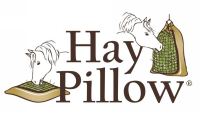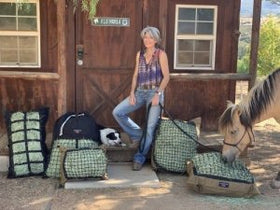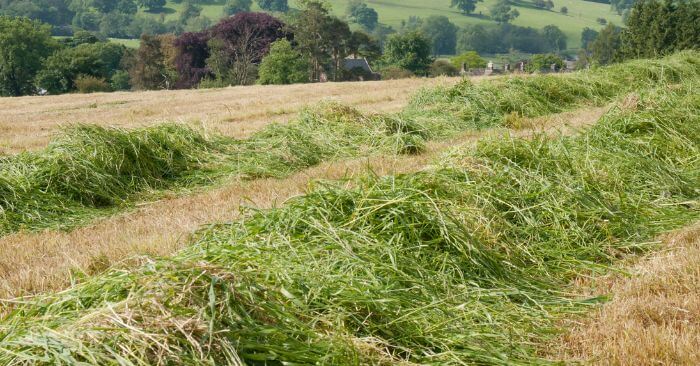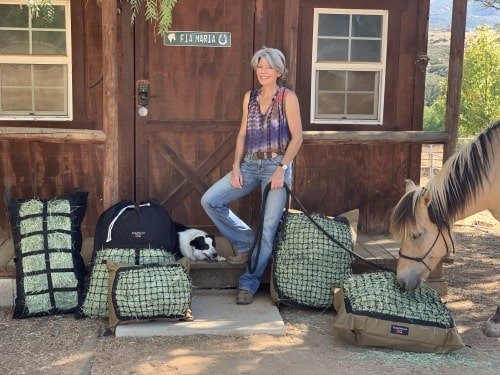Is Your Grass Hay Really Low Sugar/Starch?
A friend was in the process of finding low sugar/starch hay to fill her barn for the year. Prior to purchase, she tested two different crops (both first cutting) – one Teff and one a Timothy/Orchard mix.
Most would assume the Teff hay, known for being low sugar/starch, was lower in NSCs (non-structural carbohydrates). I reviewed her tests (provided in this article) and spoiler alert – the Teff hay was higher in NSCs.
This is a great example of why you should never assume any one species or cutting of grass hay will be low in sugar and starch. A combination of environmental conditions, maturity, curing conditions and genetics all contribute to sugar and starch levels. Read on to learn more.
Hay Tests Tell the Whole Story
Over the past 15 years, I’ve reviewed hundreds of hay tests from numerous states and grass hay species. Regarding NSCs or nutrient levels, I’ve learned that the only guarantee is there are no guarantees - unless you test your hay.
Pictured below are a portion of my friend’s hay test results for the Teff and Timothy/Orchard grass hays. The results are reported in two columns:
- As Sampled - includes the moisture content.
- Dry Matter - refers to the sample with all the moisture removed (completely dehydrated).
You can view the tests in their entirety by clicking on the photo, which will download the PDF file. I encourage you to view the full test results and familiarize yourself with a hay test.
I've underlined the results for WSC, ESC and starch. Depending on your school of thought, either add the ESC% + starch% or the WSC% + starch% to calculate the total % of NSCs. Ideally, strive for 10% or less. (Our interview with Katy Watts of Safergrass.org, delves deeper into the nutritional relevancy of ESC versus WSC. You can also find comprehensive test result definitions from Equi-Analytical here: Glossary of Nutrient Terms.)
Main Contributing Factors that Affect Sugar Levels in Grass Hay
Environmental Conditions
Sugars accumulate in grass when there is abundant sunlight, but factors limit growth. The main stressors when grass hay crops are grown and cut are:
- Temperatures
- Nutrient deficiency
- Drought stress
Conditions posing the greatest risk for higher sugar content:
- Sunny days and nights with freezing or near freezing temperatures
- Abundant sun and drought
- Nitrogen deficiency
- Cut later in the day
Conditions creating the lowest sugar levels:
- Foggy, cloudy weather with nights above 40F
- Optimum levels of nutrients and moisture with management to prevent heading
- Cut in the morning prior to 10:00 AM
Learn more: Sugar Content of Pasture & Hay: Q & A with Katy Watts, Founder of Safergrass.org
Maturity
Mature grass hay with empty seed heads or grass hay straw (mature grass hay with the seed head harvested) has the least propensity to have high levels of sugar and starch, second to environmental conditions.
Maturity and cutting are not synonymous. Grass hay crops are cut and baled numerous times throughout a growing season. Whether it is first, second or third cutting does not depict the maturity of the plant when it is cut.
Mature cuttings will be longer and more course, with a higher stem to leaf ratio, empty seed heads or void of seed heads (straw). The length is typically 9” – 16”.
Immature cuttings will be shorter and softer with no seed heads and a high leaf to stem ratio. The length is typically 3” – 6”.

Curing Conditions
After grass is cut, sugars begin to deplete through respiration. The level of sugar depletion is determined by the duration of the drying/curing process. The longer grass takes to dry in the field, less of the sugars remain. Conversely, the faster grass dries in the field, more of the sugars remain.
Grass Species
Warm season grass species, such as Teff and Bermuda, typically test lower in sugars than cool season grass species such as Rye, Orchard, and Timothy – but only with optimum environmental conditions. Adverse conditions can skew the results easily.
A particular grass species' genetics determine the optimum environmental conditions for achieving low sugar and starch levels. Although Teff hay is genetically predisposed to store less sugar than Orchard or Timothy, environmental conditions prevailed. This is perfectly illustrated in the hay test results presented in this article.
My friend, who provided the hay tests, personally knows the growers. The Teff hay crop was drought stressed, the Timothy/Orchard crop was not drought stressed.
Circling Back
When striving to find low sugar and starch hay, no grass hay species is immune to high levels of NSCs. A combination of environmental conditions, maturity, curing conditions and genetics all play a role in sugar and starch levels. The only way to know your values is to test your hay.
Helpful Resources
- How & Where to Test Your Horse's Hay & Interpret Results
- Healthy Gradual Weight Loss for Horses vs. Fasting & Forage Restriction
- Can Horses Eat More Hay Without Weight Gain? The Surprising Factors
- Slow Feeding - Transition Tips & Techniques
- A Safer Always Have Hay Source – Mature Grass Hay
- Horse Slow Feeder Safety Tips
- 7 Easy Ways to Help Prevent Equine Colic
References
- Jennifer Weinert-Nelson, J., Dolan, C., Williams, C. (February 2022). Non-structural Carbohydrates and Equine Warm-season Grass Pastures. Retrieved from https://njaes.rutgers.edu/fs1340/
- KPP staff. Picking Hay for Sugar/Starch Sensitive Horses. Retrieved from https://kppusa.com/picking-hay-sugarstarch-sensitive-horses/
- Watts, K., Chatterton, N. A Review of Factors Affecting Carbohydrate Levels in Forage (PDF download). Retrieved from https://static1.squarespace.com/static/5e7fddf934de306c2b8cc313/t/5e862934474ea011f25fe41c/1585850676230/factorseffectingNSC.pdf
- Beam, J. What is the Best Time of Day to Make Hay. Retrieved from https://kingsagriseeds.com/blog/whats-best-time-day-make-hay/






2 Comments -
Hay Pillow Inc • -
Angelica •
Hi Angelica,
My best suggestion would be to go to one of the numerous feed stores in Ramona and look at the orchard grass hay they have in stock. Immature cuttings of cool season grasses tend to be the softest with a very high leaf to stem ratio.
Hi! Im in Ramona as well. Do you have a source for good grass hay? Just curious! My girls are all older & dentally challenged, but still love eating alot of soft hay. Teff has been the most digestible for them..& bermuda seems difficult to digest. Thanks for any info!